#porcellionides pruinosis
Text
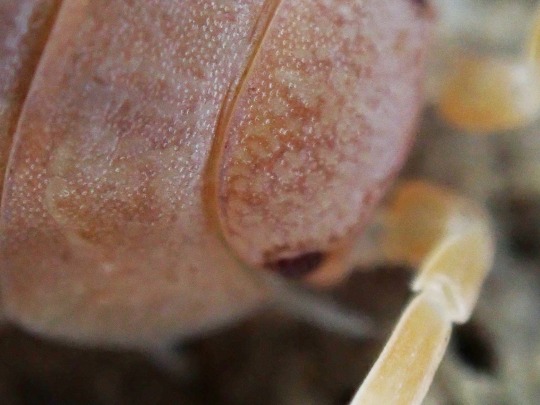
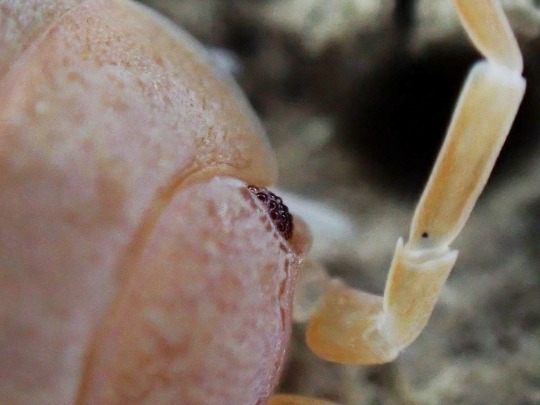

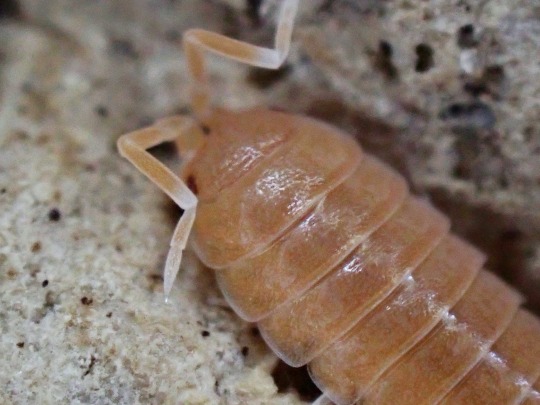
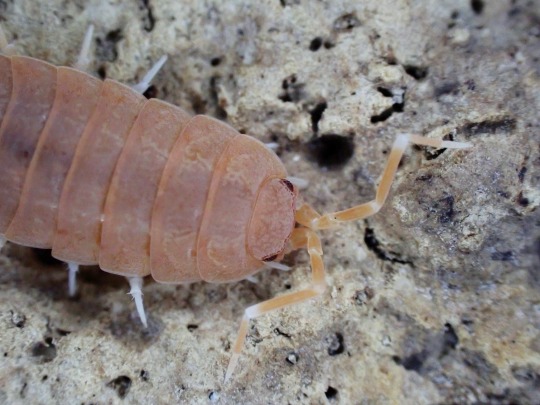

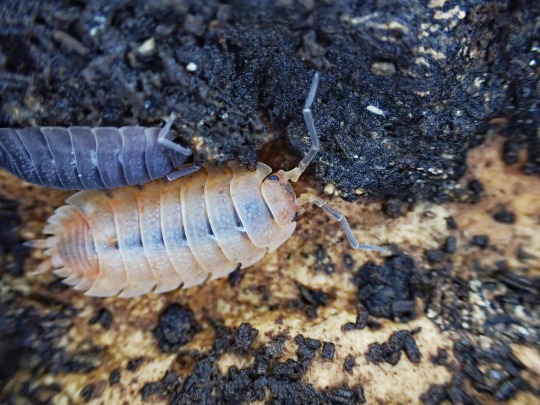


Isopod macros! In variety bins like I have you sometimes get odd hybrids. This one has an orange body and grey antennae.
#invertebrates#invertiblr#inverts#invert#bugblr#isopod#isopods#porcellio scaber#rough isopods#rough isopod#porcellionides pruinosis#powdery orange isopod#powdery isopod#powdery blue isopod
48 notes
·
View notes
Text
thegeckogal replied to your post “Hello Tser! I'm in the process of researching a bioactive enclosure...”
@tser Do you have any more tips for starting an arid bioactive enclosure? I just switched my leopard over to the Biodude's Terra Sahara and have a seperate cage for my Powder Blue isopod culture. Is 1 month enough to culture those isopods before adding to the tank?
I have a few posts on arid bioactives and general bioactive setup stuff:
Different arid CUC: http://tser.tumblr.com/post/175388745299/what-do-you-think-about-darkling-beetles-as-a-leo
This contains information on humid refuges for an arid bioactive: http://tser.tumblr.com/post/173603305204/hey-there-im-trying-to-make-a-bioactive
Basic Stuff to know: http://tser.tumblr.com/post/167149163824/bioactive-stuff-no-one-told-you-about (applies to all bioactive enclosures)
For the isopods it’s going to depend! Powder blues are great breeders, and very hardy and prolific. However, if you got baby powder blues to start with it’s going to take a long time before they grow up and start breeding.
Porcellio species don’t start breeding until six to nine months after they’re born, and Armadillidium may not reach reproductive age until they’re 18 months old! I believe Porcellionides (like powder blues) are likely to be closer to the former. This is one reason the dwarf white and purple species are so popular; they breed at three months old. In addition, Armadillidium species often only have babies once a year (but a large female may have almost a hundred babies at a time!), while the dwarf species reproduce many times per year (and Trichorhina tomentosa is parthenogenic).
So, if you started with adult Powder Blue isopods a month might be plenty to start them reproducing. With many prolific species, you usually end up with a gravid female or a few in an adult starter culture, which means you may have babies within weeks (the female may hold eggs in her marsupium -- pouch formed by plates on her underside -- for weeks or months depending on the species, though; I don’t know how long powder blues hold them).
However, if you started with baby isopods then a month is not going to be long enough for them to grow and be populous enough to take care of the waste produced by your gecko. In addition it depends on how many adults you have, especially if your gecko is likely to eat some of them. Lots of leaf litter will help them hide.
My suggestion would be to add in some other CUC in addition, such as lesser mealworms, which reproduce pretty quickly, and to start at least one additional culture of isopods so that you can add in more as needed. I also recommend springs even in arid enclosures, especially during setup while everything’s settling in. Eventually they’ll probably only survive in the humid refuges in your enclosure.
In the meantime while your isopods grow up and your CUC grows in, you’ll just need to do more chores in the enclosure (as I mentioned in the “Bioactive Stuff” post).
Regarding Terra Sahara, let me know how you like it. Some people seem to like it, and others find it isn’t fast enough draining, but I’ve heard mixing it with some additional inorganic material can help with that.
Kinda infodumped on isopod reproduction there. Hahahaha.
#bioactive#arid bioactive#bugblr#isopod#powder blue isopod#porcellionides#porcellionides pruinosis#crustacean#clean up crew#cuc#my posts
15 notes
·
View notes
Text
I impulse bought isopods at Petsmart so you don’t have to. They’re definitely not powder blues, but they do all seem to be morphs of Porcellionides pruinosis (I spotted powder orange, oreo crumble, white out, and possibly one powder blue). As with everything Petsmart, proper care of them in store likely depends on the store, but there were a couple of tubs that were completely dried out at the one I went to.
Also, my bug mix recipe is:
• a 10 qt bag of ZooMed Reptisoil
• a 4 qt bag of Zilla Jungle Mix
• half an 8 qt bag of ZooMed Forest Floor
• 6 lbs of earthworm castings (I bought this one).
It made enough to fill a 10 gallon tank about 1/3 of the way for my millipedes and then fill this container and two 2 gallon bins about 2” deep for isopods. I probably didn’t need the Jungle Mix, but I wanted a little extra variety and peat in there. You could also use any mulch in place of Forest Floor, really.
34 notes
·
View notes
Note
Bio-active tips for western hognoses?
For my bioactive enclosures, I use a mix of organic soil (I have always used EcoScraps organic garden soil), play sand (not reptile sand from the pet store, but literally the sand that is specifically for sandboxes and such - I got mine at Lowe’s which is where I get most things), and sphagnum moss (I use Spagmoss) - but for my hognoses (and my Kenyan sand boa) I mix more play sand into the dirt and no moss (50% dirt, 50% sand) as they don’t require as much humidity as my ball pythons and boas. I also have 4-5 inches of substrate for them. I use powdery blue isopods (Porcellionides pruinosis), large white springtails (Folsomia candida), and superworms/darkling beetles in all of my bioactive enclosures as cleaner crews and they’ve all been doing a great job and my snakes could not care any less about them being in their enclosures. If you want some more specific information, let me know, but I am not really sure what else to say? I don't have live plants in my enclosures because I am a pro at killing plants and they're too much work for me in my honest opinion, I just have natural substrate and fake plants, so I can't really give advice about that, apologies.
7 notes
·
View notes
Text
Feeling a little better about how everyone's doing.... Dig sons seem to really love the new layout to their enclosure. They're occassionally out scuttling during the day now, and when they are spooked they hurry back under their cork. I'm glad that they feel safe there. Before they would use it pretty frequently, but not nearly as often as they do now. Mixed reactions to the Repashy Bug Burger I ordered: Byrsotria rothi nibbled at best, but I'll still offer them some a couple times a week in addition to their greens and fruit. I'll have to adjust to a smaller amount but that's fine. Porcellio scaber had alright responses. Good amount was gone, but it took them some time to find it. These and the rothi were the least interested in the repashy, but I will continue to offer it in the future. It makes me really happy that everyone seems to be doing alright, Porcellionides pruinosis "orange" were INCREDIBLY enthusiastic about their bug burger it seemed, and they ate almost every bit of it! These guys have also proven to be the most active of all of my isopods. Every time I open their enclosure at least 3-4 of mixed ages are running about and investigating. What a cool species. The rathkii I collected outside were incredibly shy at first. I was afraid they all died because I never saw them in their enclosure. But, after I made their enclosure a little more humid and offered them some repashy they devoured most of it and now I see them out all the time! They seem to really like their bug burger and I think it was the combination of higher humidity, food, and time to acclimate in peace that led to them being more visible. Gosh these buddies make me so happy they do. I get really anxious and doubtful and hate myself sometimes and rip myself apart for missing a feeding sometimes or fudging up something or other...but...right now everyone is doing well and I've been learning so much through working with all of them and I can't imagine life without these buddies.
#pet inverts#invertebrates#pet roaches#roaches#byrsotria rothi#roths giant burrowing cockroach#isopods#porcellio scaber#p pruinosis#t rathkii#still need to work out proper tags jeez
4 notes
·
View notes
Text

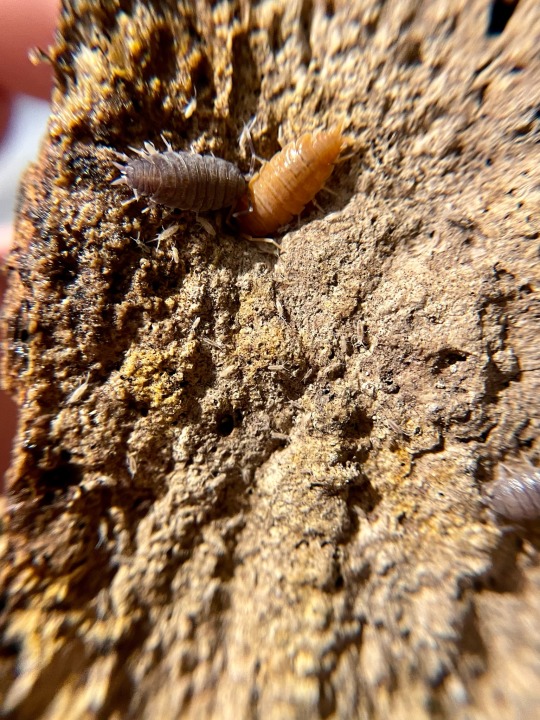

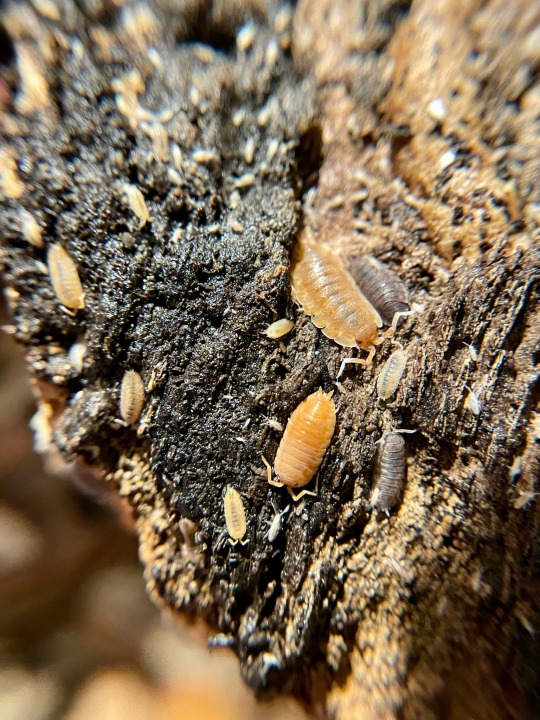


Isopod bins! They're both booming, with springtails and baby isopods.
#invertebrates#invertiblr#inverts#invert#bugblr#isopod#roly poly#isopods#porcellio scaber#porcellionides pruinosis#rough isopods#powdery isopod
31 notes
·
View notes
Text
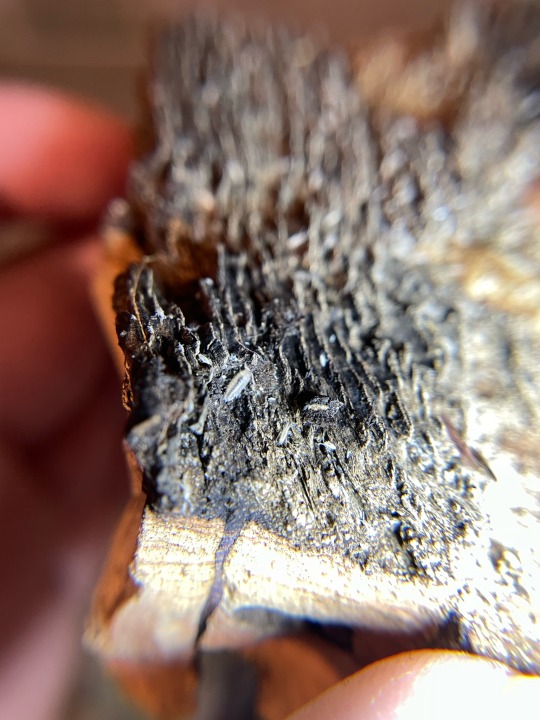


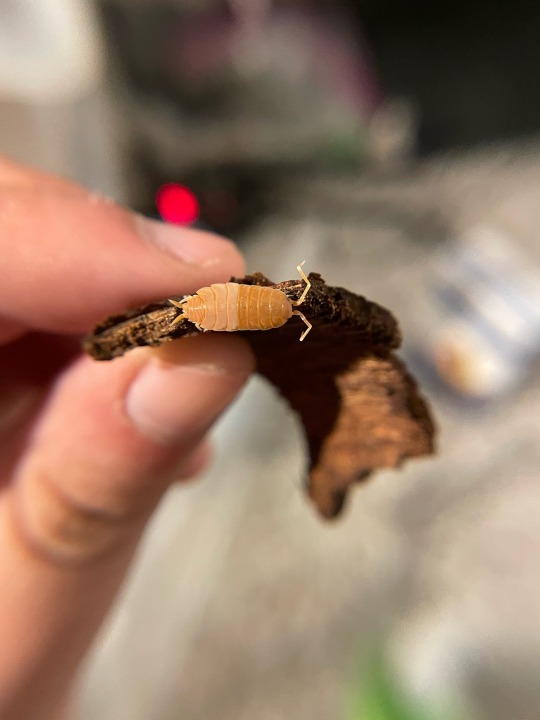
Isopods doing great
#invertebrates#invertiblr#inverts#invert#bugblr#isopod#isopods#roly poly#porcellio scaber#porcellionides pruinosis#powdery orange isopod#rough isopod
23 notes
·
View notes
Text
I absolutely love watching them eat.
#invertebrates#invertiblr#inverts#invert#bugblr#isopod#isopods#roly poly#porcellionides pruinosis#powdery orange isopod#powdery isopod#powdery blue isopod
11 notes
·
View notes
Text





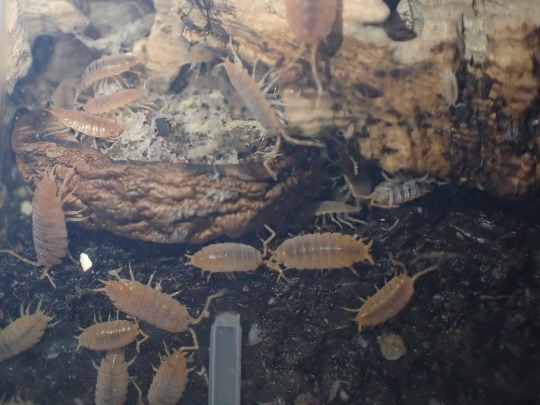


Feeding the isopods! Their common name is in reference to the powdery sheen some of them get. It's absolutely beautiful!
#invertebrates#invertiblr#inverts#invert#bugblr#isopod#isopods#roly poly#porcellionides pruinosis#powdery orange isopod#powdery isopod#powdery blue isopod
10 notes
·
View notes
Text
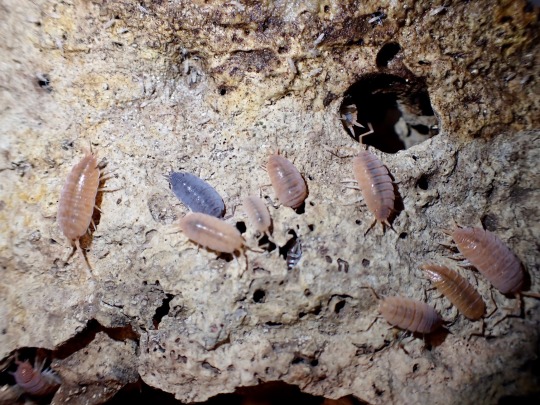



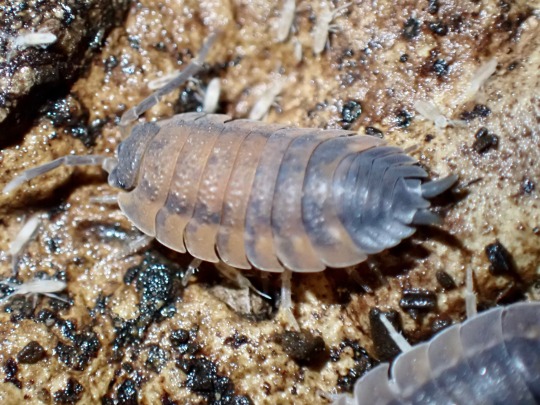
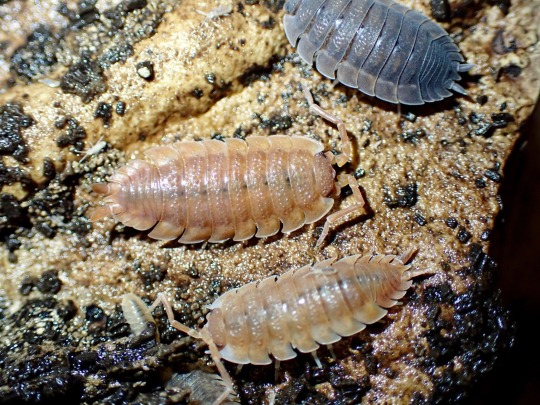

Some isopods
#invertebrates#invertiblr#inverts#invert#bugblr#isopod#isopods#roly poly#porcellio scaber#porcellionides pruinosis#rough isopods#powdery isopod
12 notes
·
View notes
Text
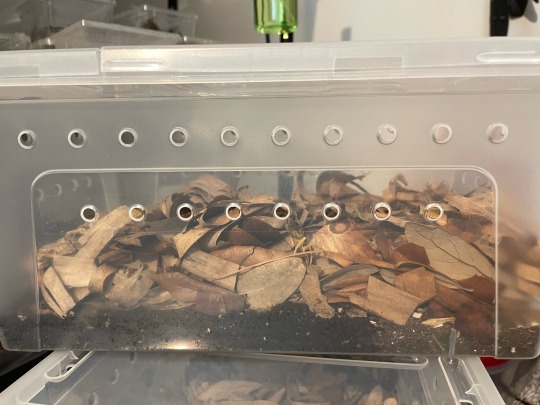
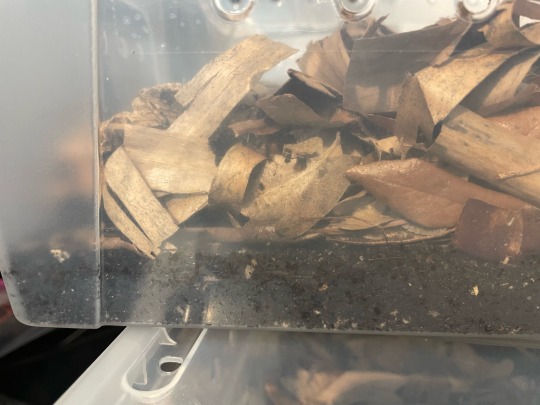

Demonstration of moisture gradient in my powdery bin, I only wet the left side under the cork bark and on the spaghnum moss, and over time the moisture is drawn across the substrate.
#invertebrates#invertiblr#inverts#invert#bugblr#isopods#roly poly#porcellionides pruinosis#powdery isopod
5 notes
·
View notes
Text
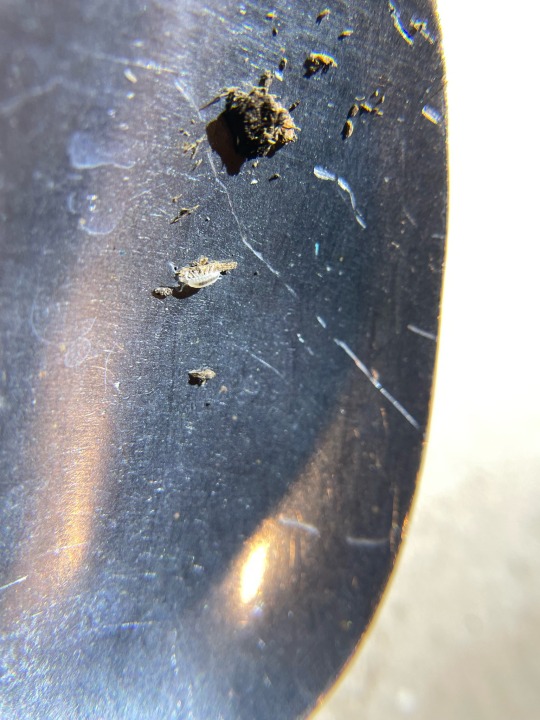
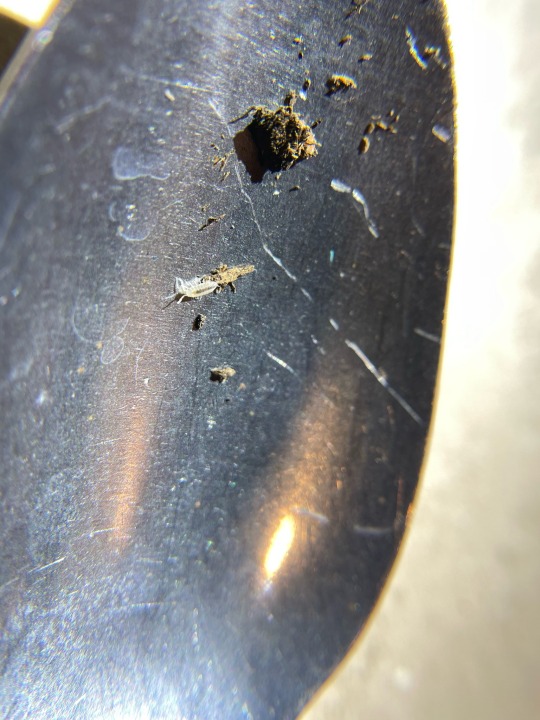
Tiny manca I found in my pruinosis while I was moving them over!
#invertebrates#invertiblr#inverts#invert#bugblr#isopod#isopods#roly poly#porcellionides pruinosis#powdery isopod#powdery orange isopod
3 notes
·
View notes
Text

Remains of a chicken neck I gave them.
#invertebrates#invertiblr#inverts#invert#bugblr#isopod#isopods#roly poly#porcellionides pruinosis#powdery blue isopod
17 notes
·
View notes
Text


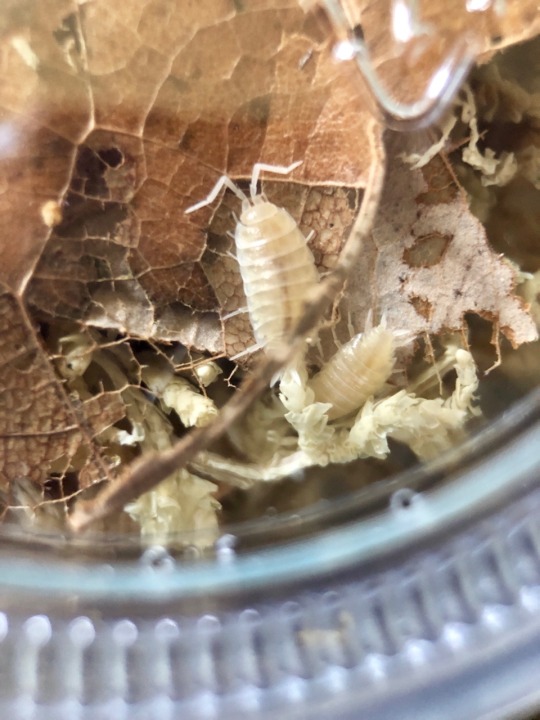
Got some new boys! These are powdery whites, I wanted to boost the expression of white isopods in my mixed bin and also add some more genetic diversity.
#invertebrates#invertiblr#inverts#invert#bugblr#isopod#isopods#roly poly#porcellionides pruinosis#powdery blue isopod
20 notes
·
View notes
Text
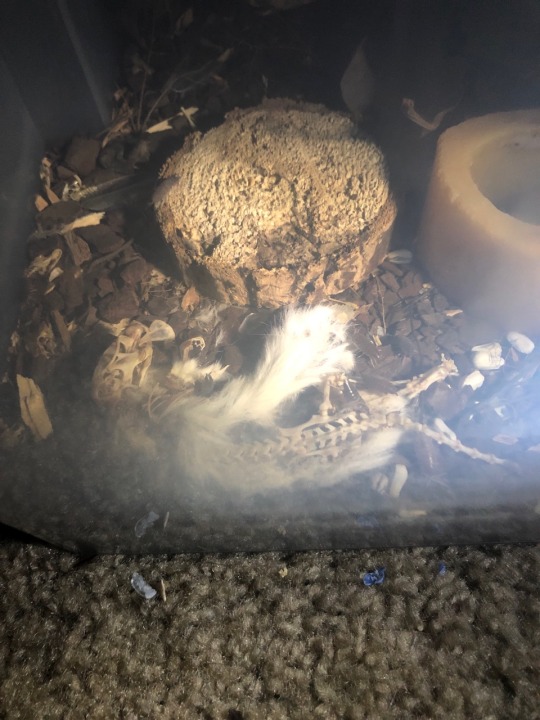

It's almost a complete skeleton! Entirely isopod cleaned!
#invertebrates#invertiblr#inverts#invert#bugblr#isopod#isopods#roly poly#porcellionides pruinosis#powdery blue isopod#vulture culture#vc#vulture community#bones#death#dead animal#gore
26 notes
·
View notes
Text
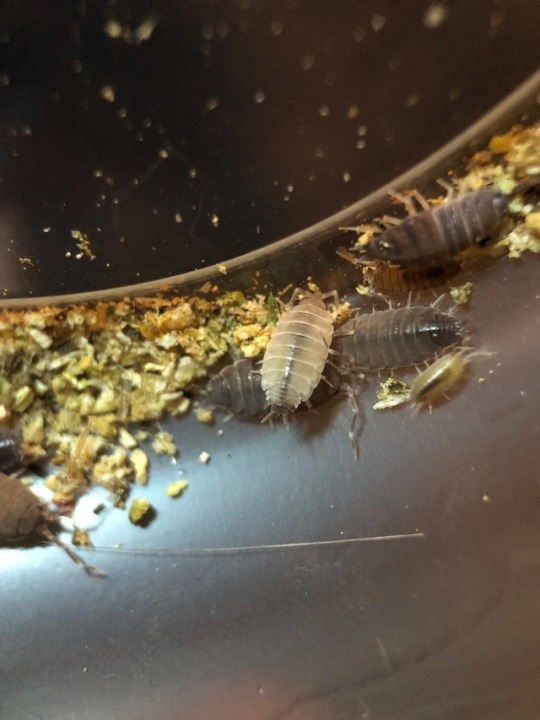

Powdery blues are pretty cool, even if they're really common.
#invertebrates#invertiblr#inverts#invert#bugblr#isopod#isopods#roly poly#powdery blue isopod#porcellionides pruinosis
47 notes
·
View notes